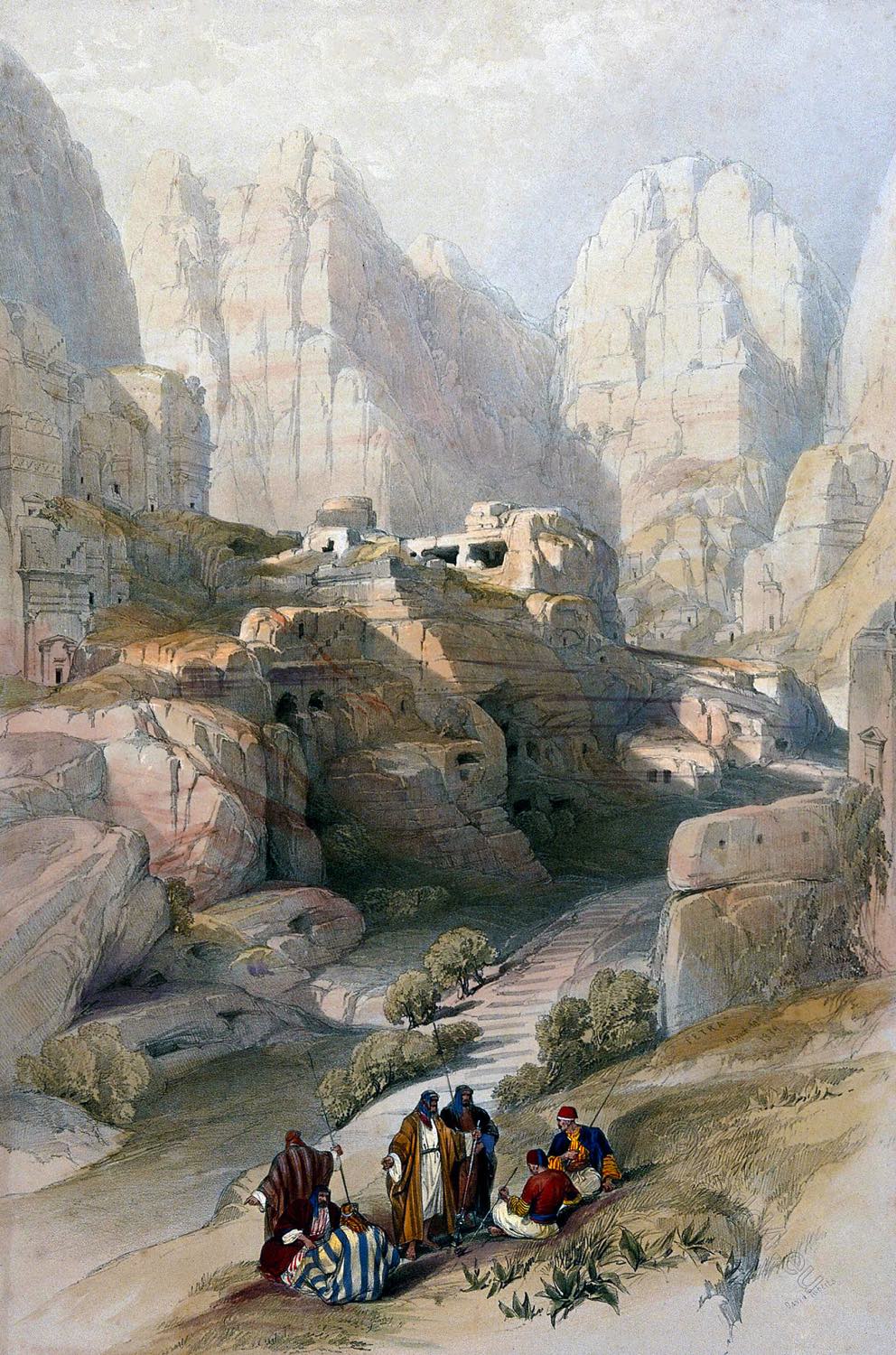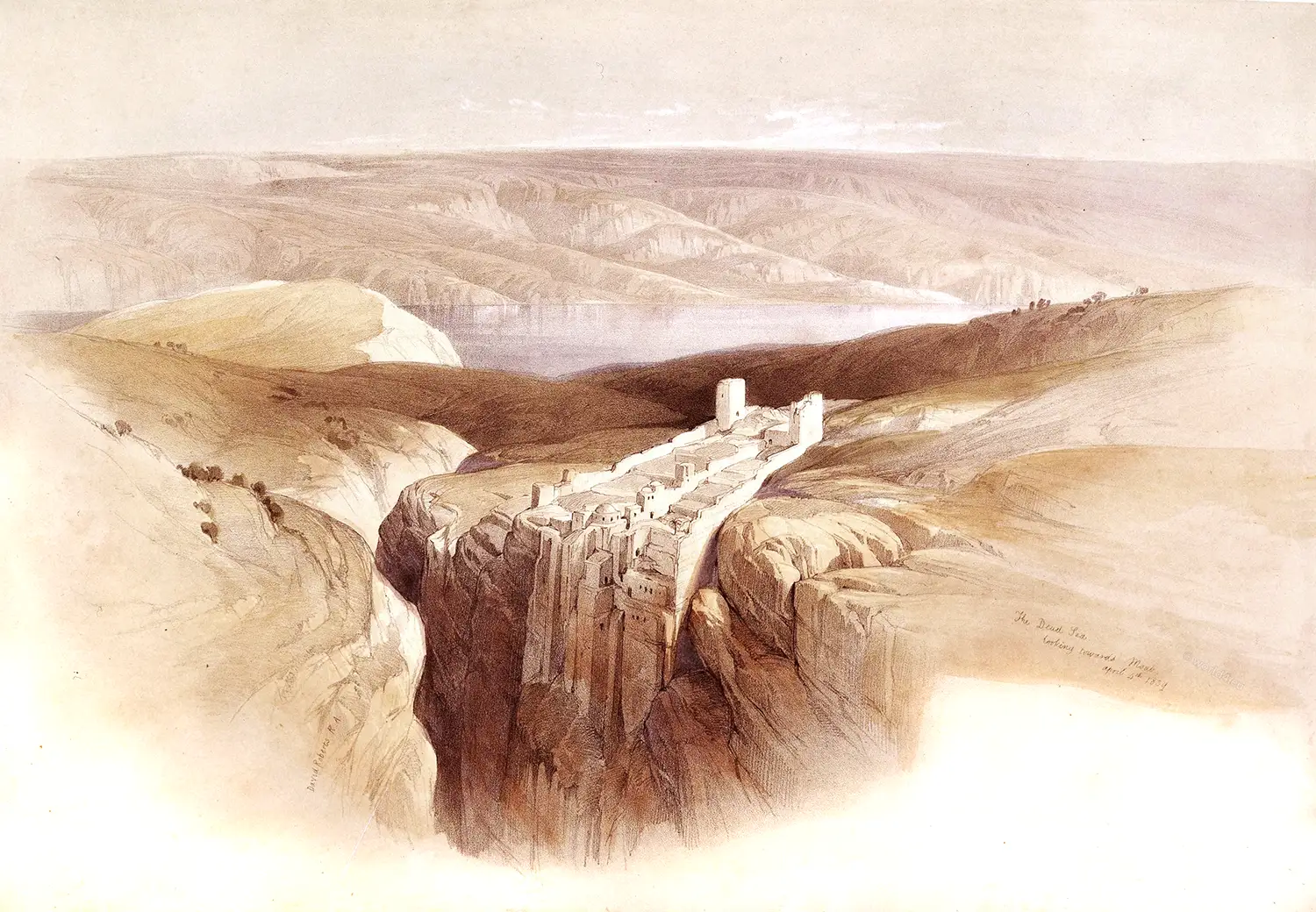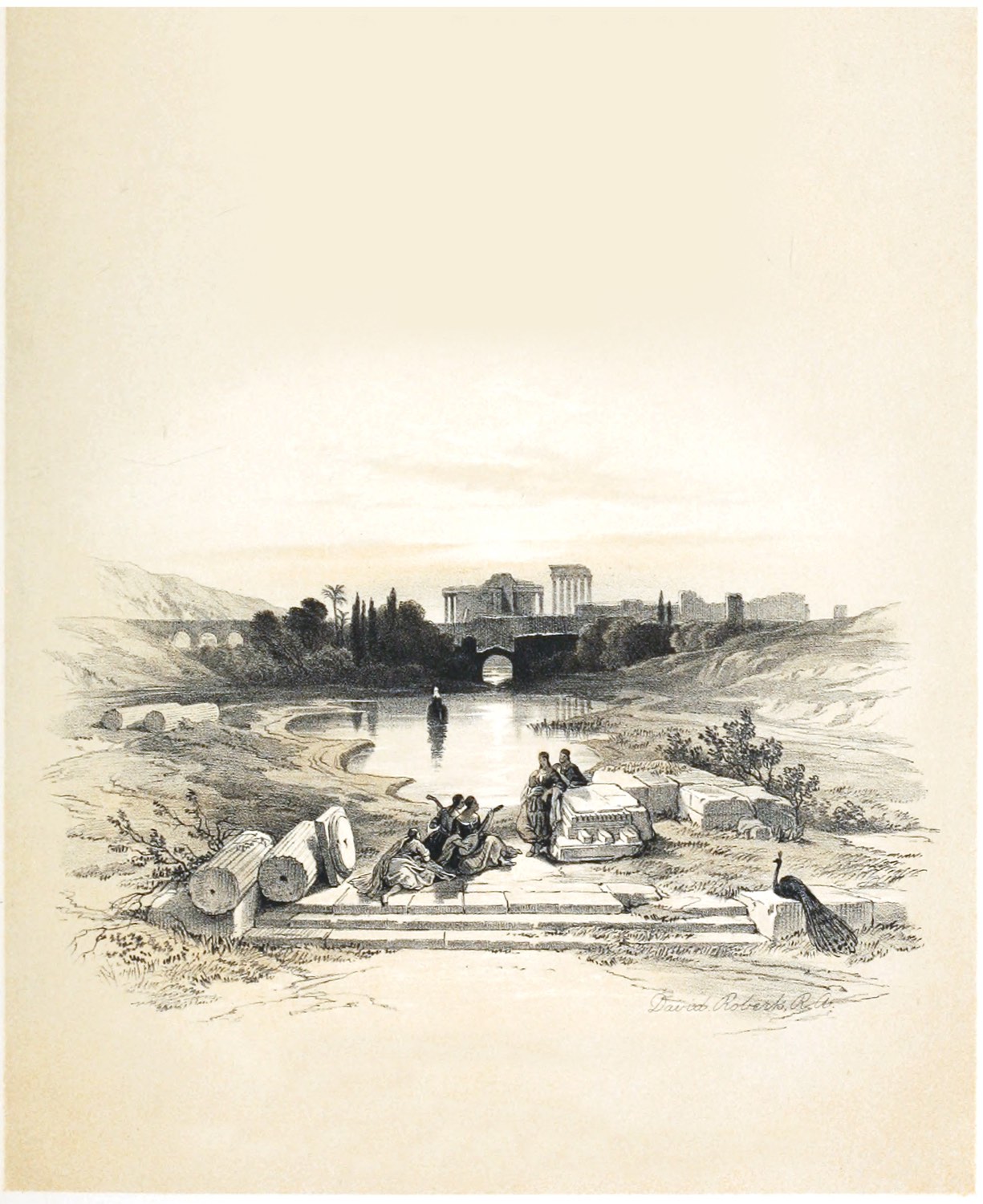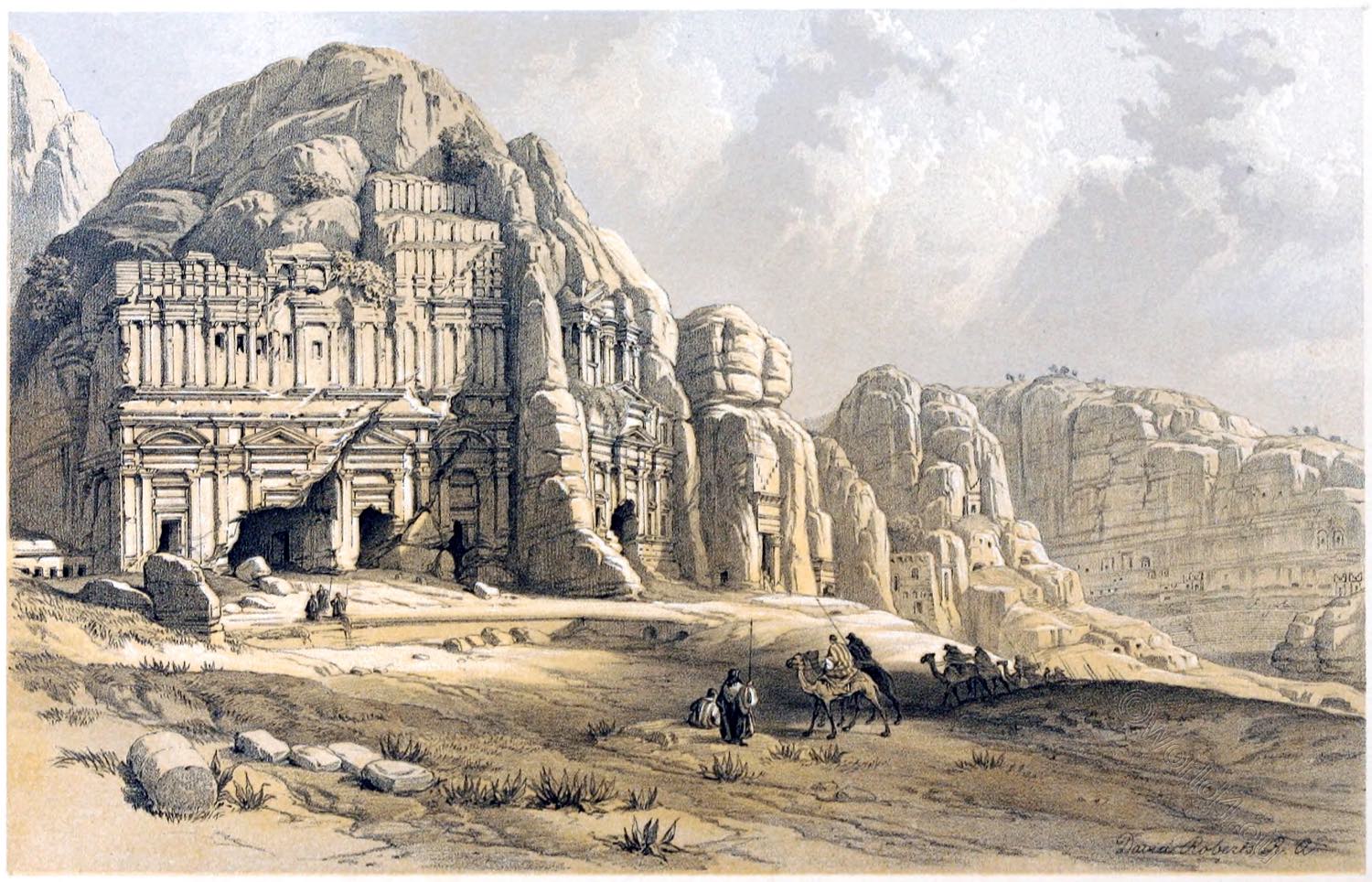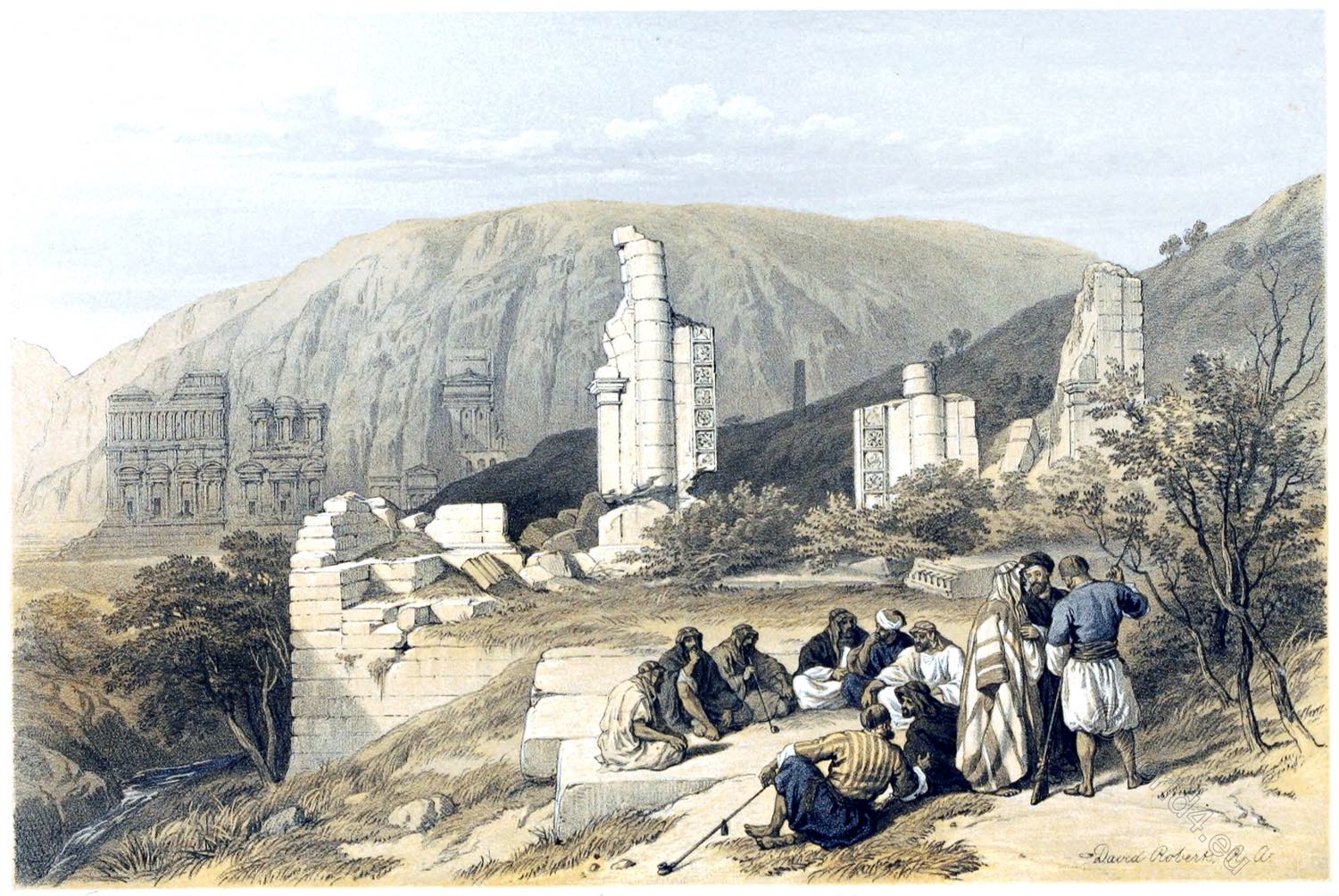
RUINS OF A TRIUMPHAL ARCH
by David Roberts.
It is to be remembered that against Petra itself the Divine denunciation has been explicitly fulfilled. The whole area of the valley is a bed of ruins. The “line of confusion and the stones of emptiness” are scarcely more than the obvious expression for the havoc of the actual City. Though the fabrics, such as they were, formed from the rocks, are nearly indestructible, and will excite the wonder of many a future age,— Bozrah has become “a desolation, a waste and a curse.”
The Arch-way in the Engraving, in the lower Roman style, is little more than a heap of stones. There appears to have been a central arch with two side ones, opening upon the esplanade which extended from the Theatre to the Doric edifice immediately under the rock of the Acropolis.
In front a bridge, of which a portion remains, crossed the stream. On the hill are considerable ruins of temples and other public buildings, and portions of the esplanade still sweep round its base. 1)
Among the relics of the Arch lies a large stone, bearing a figure with expanded wings, which probably occupied a place on the Arch. From the pilasters and the fragments scattered round, the whole structure seems to have been loaded with ornament. 2) This profusion, and the Greco-Roman character of the sculptured fronts in various instances, render it more than probable that the City was the object of considerable decoration by its Western masters, from the second century, when it first became a Roman province.
But the Roman style was unfit to mingle with the Petraean. Both were lavish of ornament; but the former was often lavish without luxuriance and costly without grandeur. The latter, alike from the magnitude of its scale and scene, was never rich without being superb nor simple without being sublime.
The fulfilment of the prophecy does not require that this extraordinary and once beautiful City should be either wholly untrodden by man, or a place of unexampled horror. The denunciation which condemns it to eternal flame3 seems to regard it only as a general representative of heathen blasphemy.
But the peculiar allusions to its fall are perfectly compatible with a certain degree of habitancy. The Fellaheen, or Arabs, who haunt its cliffs and chasms, amount to several hundreds.
It is not wholly destitute of quadrupeds; the camel is everywhere in Arabia, and the wild goat browses among its recesses; the eagle soars above its coloured pinnacles partridges and pigeons wing the lower air; the note of the blackbird, and many of the smaller songsters, is heard; and in the season of flowers the sheltered chasms and the sides of the rocks are covered with bloom and filled with fragrance. But the inhabitants are the savage and the robber, and civilisation is gone for ever.
“Hear the counsel of the Lord that He hath taken against Edom; and Ins purposes, that He hath purposed against the inhabitants of Tertian: Surely the least of the flock shall draw them out : surely He shall make their habitations desolate with them. The earth is moved at the noise of their fall, at the cry the noise thereof was heard in the Red Sea. Behold, He shall come up as the eagle, and spread his wings over Bozrah.” 4)
1) Roberts’s Journal. 2) Kinnear, 150. 3) Isaiah xxxiv. 4) Jeremiah, xlix. 20-22.
Source: The Holy Land, Syria, Idumea, Arabia, Egypt, & Nubia, by David Roberts (British, 1796-1864), George Croly, William Brockedon. London: Lithographed, printed and published by Day & Son, lithographers to the Queen. Cate Street, Lincoln’s Inn Fields, 1855.
Discover more from World4 Costume Culture History
Subscribe to get the latest posts sent to your email.

